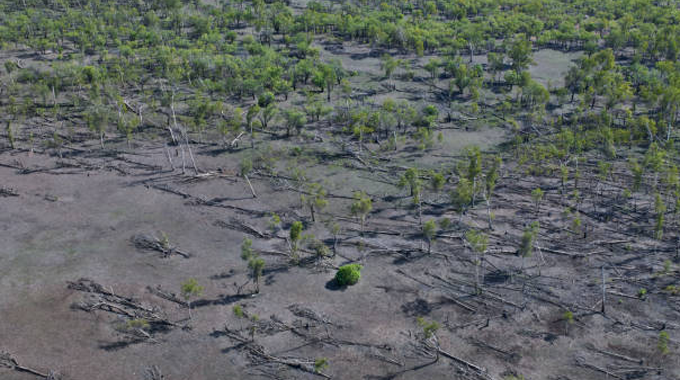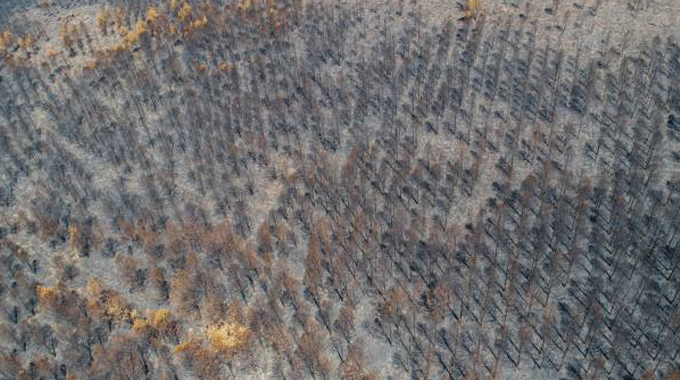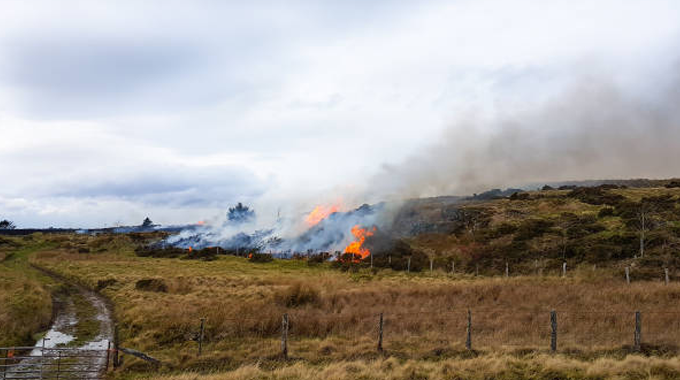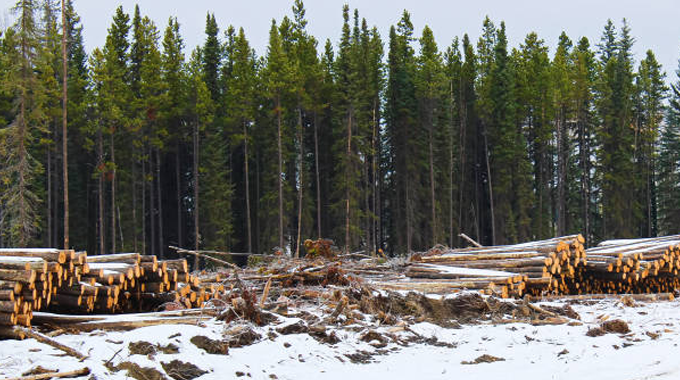How Climate Change Impacts Forest Management
- August 15, 2024
- 0 comment
Climate change is profoundly reshaping forest management practices worldwide. As temperatures rise and precipitation patterns shift, forests face increased stress, making them more susceptible to diseases, pests, and wildfires. These changes demand innovative management strategies to maintain forest health and resilience. Managers must now consider climate projections in their planning, adapting traditional practices to mitigate risks and enhance forest adaptability.

This includes promoting species diversity, implementing controlled burns to reduce fuel loads, and enhancing monitoring systems for early pest and disease d-etection. The goal is to create sustainable forest ecosystems that can withstand the evolving climate while continuing to provide essential ecological, economic, and social benefits.
List of How Climate Change Impacts Forest Management:
- Changes in Climate Patterns
- Impact on Forest Health
- Wildfire Risks
- Adaptation and Mitigation Strategies
- Sustainable Forestry Practices
- Policy and Economic Considerations
- Community and Stakeholder Involvement
- Future Outlook
Changes in Climate Patterns
Rising Temperatures

Climate change has led to a steady increase in global temperatures, which significantly impacts forest ecosystems. Higher temperatures can stress trees, reducing their growth and making them more vulnerable to diseases and pests. Additionally, warmer conditions can alter the timing of seasonal events, such as flowering and leaf shedding, disrupting the life cycles of various species that depend on these cues.
Altered Precipitation Patterns
Changes in precipitation patterns, including shifts in the timing, intensity, and distribution of rainfall, are another consequence of climate change. Some regions are experiencing more intense and frequent droughts, while others face increased rainfall and flooding. These alterations can lead to soil erosion, reduced water availability for trees, and changes in the types of vegetation that can thrive in different areas.
Increased Frequency and Severity of Extreme Weather Events

The frequency and severity of extreme weather events, such as hurricanes, storms, and heatwaves, have also risen due to climate change. These events can cause widespread damage to forests, uprooting trees, and disrupting ecosystems. The recovery from such events is often slow and can permanently alter forest structure and composition.
Impact on Forest Health
Increased Susceptibility to Pests and Diseases

Warmer temperatures and altered precipitation patterns create favorable conditions for many pests and diseases. Insects like bark beetles, which thrive in warmer climates, have seen population explosions, leading to extensive tree mortality. Diseases such as sudden oak death have also become more prevalent, further threatening forest health.
Effects on Tree Growth and Species Distribution
Climate change affects tree growth rates and species distribution. Some tree species may no longer thrive in their traditional habitats and may migrate to cooler areas, while others may struggle to survive. This shift can lead to changes in forest composition, with potential declines in biodiversity as certain species dominate or decline.
Changes in Forest Composition and Biodiversity
The combined effects of pests, diseases, and changing climate conditions can significantly alter forest composition and biodiversity. Some species may become extinct in certain areas, while invasive species may gain a foothold, disrupting existing ecosystems. This loss of biodiversity can have cascading effects on the entire forest ecosystem.
Wildfire Risks

Increased Frequency and Intensity of Wildfires
Climate change has led to an increase in the frequency and intensity of wildfires. Higher temperatures and prolonged droughts dry out vegetation, creating ideal conditions for fires to spread rapidly. Wildfires not only destroy vast tracts of forest but also release significant amounts of carbon dioxide, contributing to further climate change.
Implications for Forest Management and Fire Prevention Strategies
The increased risk of wildfires necessitates new forest management and fire prevention strategies. Traditional fire suppression methods may no longer be sufficient, and managers must implement practices such as controlled burns and creating firebreaks to reduce fuel loads and prevent large-scale fires.
Adaptation and Mitigation Strategies
Promoting Species Diversity and Resilience
To combat the impacts of climate change, forest managers are promoting species diversity and resilience. Planting a variety of tree species can create more resilient ecosystems that are better able to withstand pests, diseases, and changing climate conditions.
Implementing Controlled Burns and Other Fire Management Practices
Controlled burns and other fire management practices are essential for reducing the risk of catastrophic wildfires. These practices help to remove excess vegetation and create natural firebreaks, minimizing the potential for large-scale fires.
Enhancing Monitoring and Early Detection Systems for Pests and Diseases
Enhanced monitoring and early detection systems are crucial for managing pests and diseases. By identifying outbreaks early, forest managers can implement targeted interventions to control the spread and minimize damage.
Sustainable Forestry Practices

Adjusting Logging Practices to Account for Climate Impacts
Sustainable logging practices must be adjusted to account for climate impacts. This includes selective logging, reducing the intensity of logging operations, and ensuring that logging activities do not exacerbate the vulnerability of forests to climate change.
Reforestation and Afforestation with Climate-Resilient Species
Reforestation and afforestation efforts must focus on planting climate-resilient species. These species are better adapted to withstand the changing climate conditions and can help restore degraded forests and sequester carbon.
Protecting and Restoring Critical Habitats and Ecosystems
Protecting and restoring critical habitats and ecosystems is vital for maintaining forest health and biodiversity. Efforts should focus on preserving old-growth forests, wetlands, and other key habitats that provide essential ecosystem services.
Policy and Economic Considerations
Role of Government Policies in Supporting Adaptive Forest Management
Government policies play a crucial role in supporting adaptive forest management. Policies should incentivize sustainable practices, provide funding for research and conservation efforts, and promote collaboration between stakeholders.
Economic Implications for the Forestry Industry
The economic implications of climate change for the forestry industry are significant. Forest managers must balance the need for economic viability with sustainable practices that ensure long-term forest health and resilience.
Funding and Incentives for Climate-Smart Forestry Practices
Funding and incentives for climate-smart forestry practices are essential for promoting sustainable management. These financial supports can help offset the costs of implementing new strategies and encourage broader adoption of adaptive practices.
Community and Stakeholder Involvement
Engaging Local Communities in Forest Management Decisions
Engaging local communities in forest management decisions is critical for success. Community involvement ensures that management practices align with local needs and values and fosters a sense of stewardship and responsibility.
Collaborative Efforts with Stakeholders, Including Indigenous Groups
Collaborative efforts with stakeholders, including indigenous groups, enhance forest management strategies. Indigenous knowledge and practices offer valuable insights into sustainable management and can help create more effective and inclusive solutions.
Education and Outreach to Promote Awareness and Action
Education and outreach are vital for promoting awareness and action on climate change and forest management. Public education campaigns, workshops, and community programs can help build support for sustainable practices and encourage individual and collective action.
Future Outlook
Ongoing Research and Innovations in Forest Management
Ongoing research and innovations in forest management are essential for addressing the challenges posed by climate change. Advancements in technology, data analysis, and ecological understanding can inform more effective management strategies.
Long-Term Projections and Scenarios for Forests Under Climate Change
Long-term projections and scenarios for forests under climate change provide valuable insights into potential future conditions. These projections can guide planning and help managers prepare for various outcomes.
The Importance of Continued Adaptation and Resilience-Building Efforts
Continued adaptation and resilience-building efforts are crucial for ensuring the health and sustainability of forests. Forest managers must remain flexible and responsive to new information and changing conditions, continuously refining their strategies to meet the evolving challenges posed by climate change.
Frequently Asked Questions (FAQs)
1. How does climate change affect forest ecosystems?
Climate change affects forest ecosystems through rising temperatures, altered precipitation patterns, and increased frequency of extreme weather events. These changes can stress trees, alter growth patterns, shift species distributions, and increase vulnerability to pests and diseases.
2. What are the main threats to forests due to climate change?
The main threats include increased susceptibility to pests and diseases, more frequent and intense wildfires, and changes in species composition and biodiversity. These threats can lead to significant forest degradation and loss of ecosystem services.
3. How are forest managers adapting to climate change?
Forest managers are adapting by promoting species diversity, implementing controlled burns, enhancing monitoring systems for early pest and disease detection, adjusting logging practices, and focusing on reforestation with climate-resilient species.
4. What role do wildfires play in the context of climate change and forest management?
Wildfires have become more frequent and severe due to climate change, posing significant challenges for forest management. Managers must develop strategies for fire prevention and control, such as controlled burns and creating firebreaks, to reduce the risk of catastrophic fires.
5. How does climate change impact biodiversity in forests?
Climate change can lead to shifts in species distributions, with some species thriving and others declining. This can reduce overall biodiversity and disrupt the balance of ecosystems, potentially leading to the loss of certain species and the invasion of others.
6. What are some sustainable forestry practices that address climate change?
Sustainable forestry practices include selective logging, promoting species diversity, reforesting with climate-resilient species, protecting critical habitats, and ensuring that forest management practices do not exacerbate climate change impacts.
7. How can government policies support adaptive forest management?
Government policies can support adaptive forest management by providing funding for research and conservation efforts, incentivizing sustainable practices, promoting collaboration among stakeholders, and enacting regulations that protect forest ecosystems.
8. What are the economic implications of climate change for the forestry industry?
Climate change poses economic challenges for the forestry industry, including increased costs for implementing adaptive management strategies and potential losses from damaged or degraded forests. However, there are also opportunities for economic growth through sustainable practices and climate-smart forestry.
9. How can local communities be involved in forest management decisions?
Local communities can be involved through participatory decision-making processes, education and outreach programs, and collaborative projects with forest managers. Engaging communities ensures that management practices align with local needs and values and fosters a sense of stewardship.
10. What is the future outlook for forests under climate change?
The future outlook for forests under climate change depends on the effectiveness of adaptation and mitigation strategies. Continued research, innovation, and adaptive management are crucial for building resilient forest ecosystems that can withstand the impacts of climate change while maintaining their ecological, economic, and social benefits.

Gilbert Griffin
Forestry AuthorGilbert Griffin is a forest management expert specializing in sustainable practices, forest health, conservation, and land management. With extensive knowledge in pest control, disease management, and habitat restoration, Gilbert develops strategies to preserve forest ecosystems and biodiversity. Passionate about the natural world, Gilbert adapts to changes in forest management and stays updated through continuous learning. Gilbert also provides seasonal advice to optimize forest care throughout the year.






Leave your comment